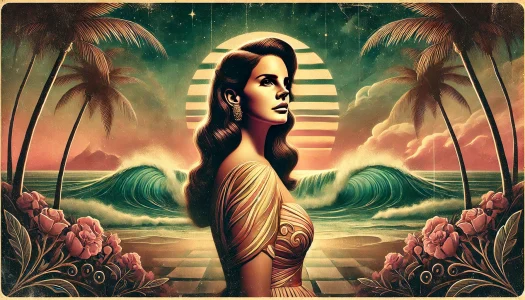Lana Del Rey is a celebrated artist whose music weaves together cinematic nostalgia, melancholic storytelling, and a distinct fusion of genres like dream pop and indie rock. Her signature style has not only captivated listeners but also shaped modern pop culture, earning her a reputation as a voice of her generation. Central to her artistic identity is the name Lana Del Rey, a persona that exudes vintage allure and timeless sophistication.
However, before adopting this moniker, she began her career under her birth name, Lizzie Grant. The decision to change her name marked a turning point in her artistic journey, allowing her to fully embrace a vision that felt more aligned with her creative ambitions.
Background: Lizzie Grant Era
Before the world knew her as Lana Del Rey, Elizabeth Woolridge Grant, professionally known as Lizzie Grant, was an aspiring artist trying to carve out her place in the music industry. During this early phase, her music had a more conventional pop sound, distinct from the dreamy, atmospheric style she would later become known for. Songs from this era, including tracks from her self-titled album Lana Del Ray A.K.A. Lizzy Grant, hinted at her lyrical depth and storytelling ability but lacked the cohesive aesthetic that would later define her work.
Despite her talent, Lizzie Grant struggled to gain traction. Her music was met with limited commercial success, and her public image didn’t resonate strongly with audiences. The music industry, with its preference for marketable personas, posed significant challenges. Her identity as Lizzie Grant seemed disconnected from the unique artistry she was striving to convey, leaving her in a creative limbo.
The Name Change: Motivation and Inspiration
The decision to transition from Lizzie Grant to Lana Del Rey was deeply rooted in artistic evolution and self-reinvention. For Elizabeth Grant, adopting a new persona was not merely a cosmetic change but an essential step in creating an identity that reflected the mood, themes, and aesthetics of the music she wanted to make. The name Lana Del Rey became a canvas onto which she could project her fascination with nostalgia, Americana, and cinematic romance.
In interviews, Lana has described the name as evoking the glamour and sophistication of a bygone era. Inspired by the beauty of the Spanish language and the mystique of Hollywood’s golden age, she wanted a name that felt sultry and evocative. “Lana” brought to mind the timeless allure of Lana Turner, while “Del Rey,” which translates to “of the king,” added a sense of regality and connection to the ocean—a recurring motif in her lyrics and visuals. She has often mentioned her affinity for the romance of coastal landscapes, drawing a parallel between the waves of the sea and the ebb and flow of emotions that underpin her music.
The name also aligned seamlessly with the themes of her artistry. It conjures images of faded glamour, heartache, and longing, which are central to her songwriting. Songs like “Video Games” and “Born to Die” showcase her ability to blend vintage aesthetics with contemporary existentialism, a style that feels inextricably tied to the identity of Lana Del Rey.
Impact on Her Artistry and Career
Adopting the Lana Del Rey persona unlocked a creative freedom that allowed Elizabeth Grant to fully embrace the artistic identity she had long envisioned. With the name change came a redefinition of her music, visuals, and narrative style, enabling her to craft a world steeped in nostalgia, cinematic storytelling, and an air of melancholic glamour. The evocative quality of Lana Del Rey as a name perfectly complemented the dreamy, vintage aesthetic of her music, creating an inseparable link between her artistry and her persona.
This transformation was most evident in her breakout single, “Video Games,” which showcased her ability to fuse haunting lyrics with lush, cinematic production. The track—and the accompanying lo-fi, retro-styled music video—captured the essence of her rebranding, immersing listeners in a universe that felt both intimate and grand. Her name became synonymous with this uniquely atmospheric approach, setting her apart from other artists in the industry.
The public and critical response to her reintroduction as Lana Del Rey was immediate and polarizing. Fans were drawn to her enigmatic aura and the emotional depth of her music, which resonated deeply with a generation seeking authenticity wrapped in artistry. Critics, however, were initially divided; some praised her as a visionary, while others questioned the authenticity of her rebranding. Despite the scrutiny, her name and music became a cultural phenomenon, sparking discussions about identity, artifice, and the power of reinvention in the music industry.
Over time, Lana Del Rey’s persona has solidified her status as one of the most innovative and influential artists of her era. Her ability to blur the lines between reality and fiction, leveraging her name as a symbol of her artistic vision, has not only shaped her career but also left a lasting impact on the landscape of contemporary music.
